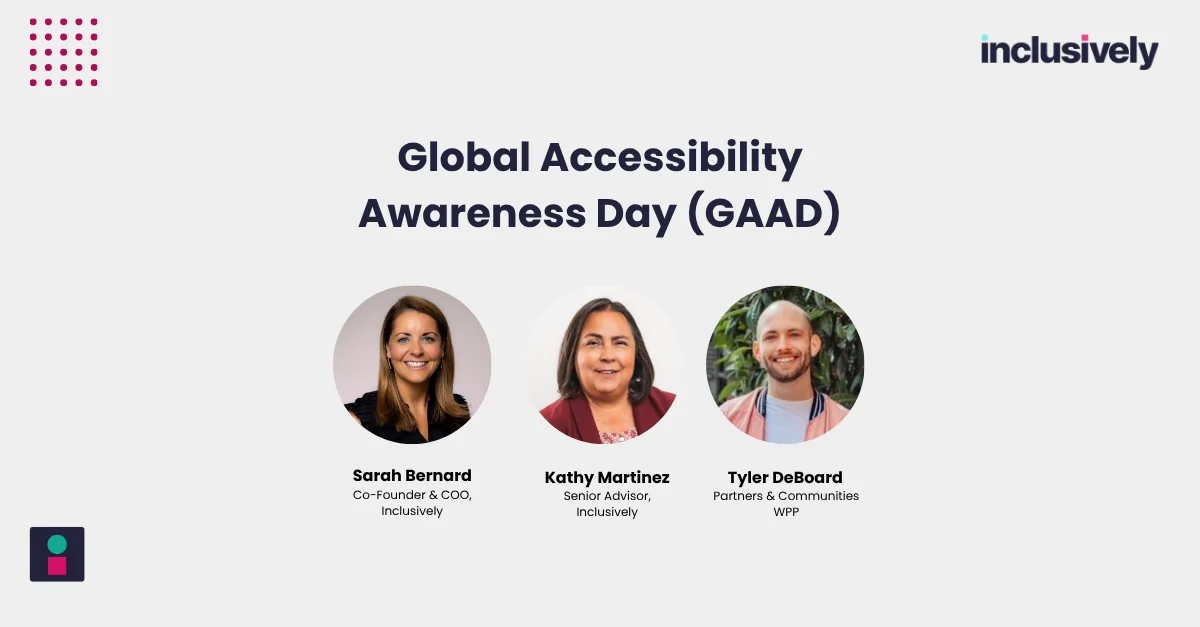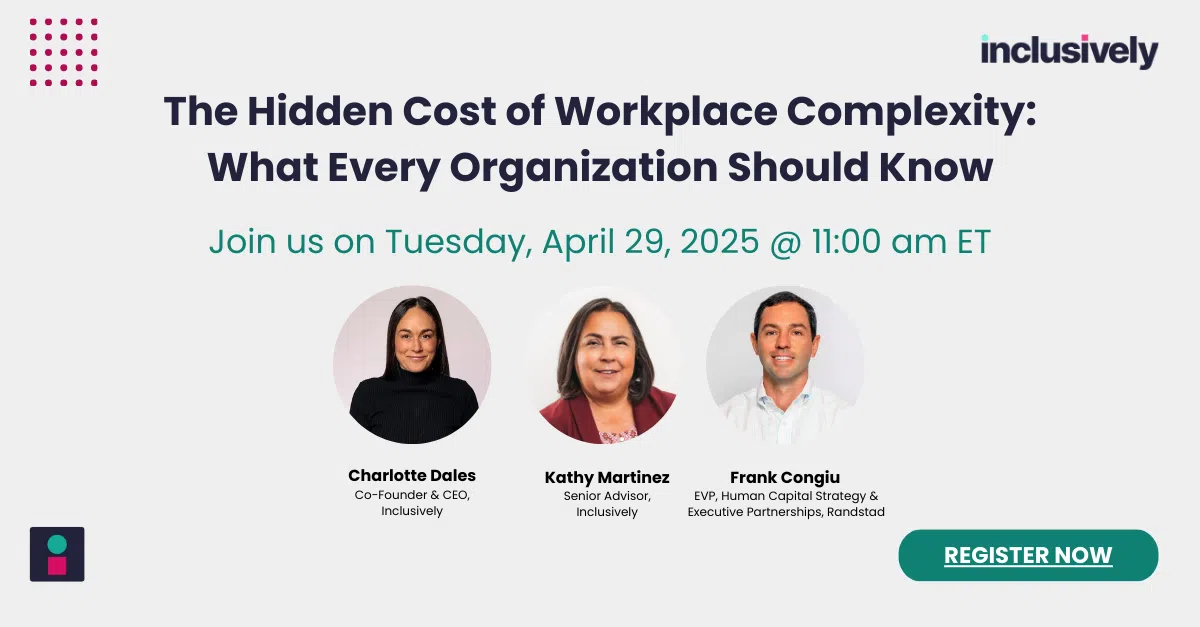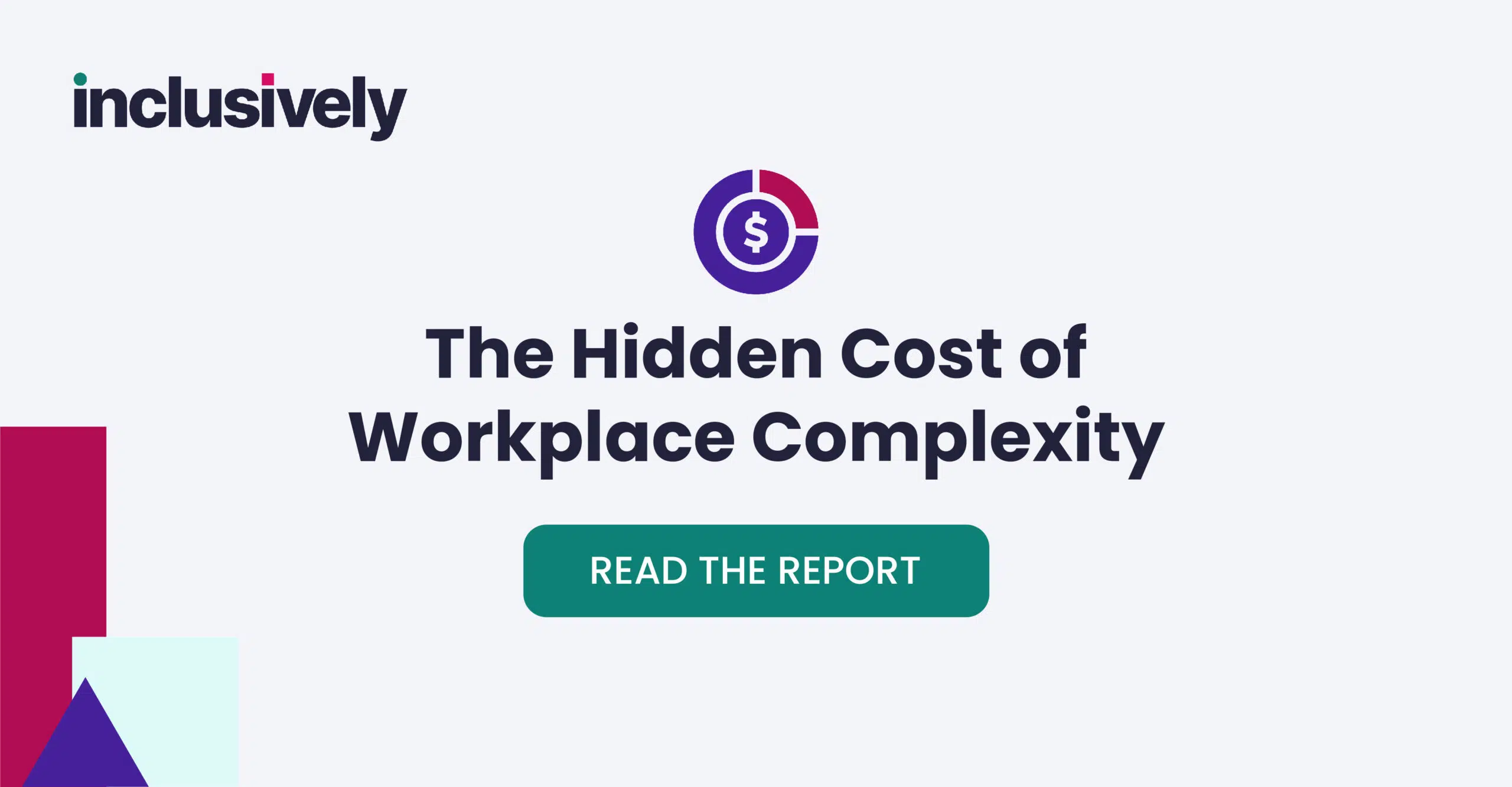Part 1 of 2
Today, 30% of the professional workforce in the U.S. fits the federal description of having a disability. That number bears repeating: at any given organization, nearly one in three employees qualifies as having a disability. If you’re thinking “that can’t be right”, ask yourself what medications you’re taking today, or what health challenges your friends and family members are enduring. Many disabilities are non-apparent: neurodivergent disabilities such as autism, dyslexia, and ADHD; mental health conditions like anxiety, depression, OCD and PTSD; and chronic illnesses including autoimmune diseases and diabetes are all conditions covered by the American Disabilities Act (ADA).
The benefits of accommodations are many, but companies are slow to catch on
In the current crush for talent, many companies are offering benefits far beyond what’s been offered in recent decades. Student loan forgiveness, vacation stipends, remote work options, and fertility treatment coverage all have the potential to impact a candidate’s ability to thrive in the job, as do more traditional accommodations like screen readers, closed captioning software, or service animals. While companies are taking a more comprehensive approach to mental health and remote work flexibility, especially in the context of the pandemic, many are not applying this more holistic view of employee wellbeing to their accommodations process, even though a significant percentage of employees could benefit from accommodations and the vast majority of accommodations are either free or of nominal cost to employers. In a recent report by the Job Accommodation Network, researchers found that 95% of accommodations provided to employees were either free or were a one-time-cost of under $500. Employers participating in the study reported multiple direct benefits associated with providing accommodations:
- 90% retained a valuable employee
- 68% reported increases in employee productivity
- 58% eliminated costs associated with training new employees
- 30% saved workers comp and other insurance costs
Where you choose to offer accommodations matters
By placing accommodations information at the beginning of the hiring process, companies signal that they want to embrace the candidate’s entire person, including any needs that will help them thrive. But many companies still relegate accommodations info to their legal or compliance departments. This is likely because accommodations in the workplace were initially the result of government legislation around equal opportunities for the disability community.
Section 504 of the Rehabilitation Act of 1973 marked the first time in the U.S. that the exclusion and segregation of persons with disabilities was acknowledged as stemming from discrimination. But many aspects of life were not covered, inspiring disability advocates and legislators to draft what became the ADA, which was signed into law in 1990. The ADA “prohibits discrimination and guarantees that people with disabilities have the same opportunities as everyone else — to enjoy employment opportunities, to purchase goods and services, and to participate in State and local government programs and services”. The ADA is an “equal opportunity” law for people with disabilities.
To be protected by the ADA, one must have a disability, which is defined by the ADA as a physical or mental impairment that substantially limits one or more major life activities, a person who has a history or record of such an impairment, or a person who is perceived by others as having such an impairment. The ADA does not specifically name impairments that are covered, as new diseases and diagnoses such as Long COVID are discovered, defined and more deeply understood over time. Many employers originally placed the accommodations function within their legal or compliance organizations in order to rely on those teams for expertise.
Unfortunately, placing the accommodations function within legal or compliance departments versus human resources or employee relations has created a system where, for much of the 30-plus years that the ADA has been in effect, employees have often felt uncomfortable asking for accommodations out of the valid fear that they will be discriminated against. One study found that job applicants who disclosed a disability (either spinal cord injury or Autism) received 26% fewer expressions of employer interest than applicants that did not include a disability disclosure. And employers have been complicit in perpetuating non-disclosure; as of 2020, only 1 in 20 employers were openly addressing disability inclusion. What this means in practice is that employees are still grossly underserved when it comes to accommodations that their employers are required to provide. Accommodations started as a box check for employers, who weren’t accountable for operationalizing accommodations; as long as they had a dedicated resource they could point to, they felt covered. As it turns out, extending inexpensive accommodations to employees is a powerful way for employers to show action and accountability, and it also benefits the entire workforce by reinforcing that the employer wants to give their employees the best possibility to thrive.
Accommodations coming out of compliance and into the limelight
The good news is that more organizations are being created to bring disability inclusion out of the compliance department and into the daily hiring and business practices of employers, and more employers are getting on board. As examples, in 2017 SAP, Microsoft, EY and other employers formed the Neurodiversity @ Work Employer Roundtable (formerly known as the Autism @ Work Roundtable) to raise awareness around autism and help other firms with their hiring processes; the Roundtable now includes nearly 50 companies. And in 2019, the Valuable 500 was founded, comprising the largest network of global CEOs committed to disability inclusion; Inclusively is proud to be one of 77 organizations listed on the Valuable 500’s Valuable Directory.
Companies are also becoming more proactive around ensuring that their products and services are accessible to the disability community, which in turn creates more opportunity for conversations around disability within the workplace. Many airlines are working to make air travel easier for those on the autism spectrum, training employees through programs that allow staff to “gain experience in delivering services to those with developmental disabilities and alleviating the stress of special needs families.” Major retailers like Nike, Target, Kohl’s, J.C. Penny and Zappos have all begun offering adaptive clothing and other products for people with disabilities and other special medical needs.
Another positive development around disability inclusion in the workplace is leaders like Richard Branson sharing their own stories of working and thriving with a disability and encouraging others to foster more transparency in the workplace; Branson, who has dyslexia, praised LinkedIn for adding the term “Dyslexic Thinking” as a valuable skill in March of 2022.
All of these developments signal positive change around disability inclusion in the workplace, but the needle isn’t moving as quickly as it should. The disability community is the largest minority population in the world, and still the most discriminated against. In future posts, we’ll delve into what accommodations in the workplace look like today, and might look like in the future, as well as what insights we’ve learned from our incredible population of candidates and what they’re asking for on the job.
References:
1. Harvard Business Review, Why People Hide Their Disabilities at Work, 2019.
2. Job Accommodations Network, Benefits and Costs of Accommodation, 2020.
3. Administration for Community Living, ADA History.
4. ADA, Introduction to the ADA.
5. ADA National Network, Experience of Discrimination and the ADA.
6. Accenture, Getting to Equal, Enabling Change, 2020.
7. DisabilityIn, Neurodiversity @ Work Employer Roundtable.
8. Forbes, Why Companies Like JSX Are Making Travel Easier For Autistic Individuals, 2022.
9. Fast Company, Nike’s hands-free shoes prove that universal design leads to better products for everyone, 2021.
10. Washington Post, Retailers are rethinking back-to-school clothing for students with disabilities, 2021.
11. Bloomberg, Richard Branson Praises LinkedIn for Adding ‘Dyslexic Thinking’ as Official Skill, 2022.



